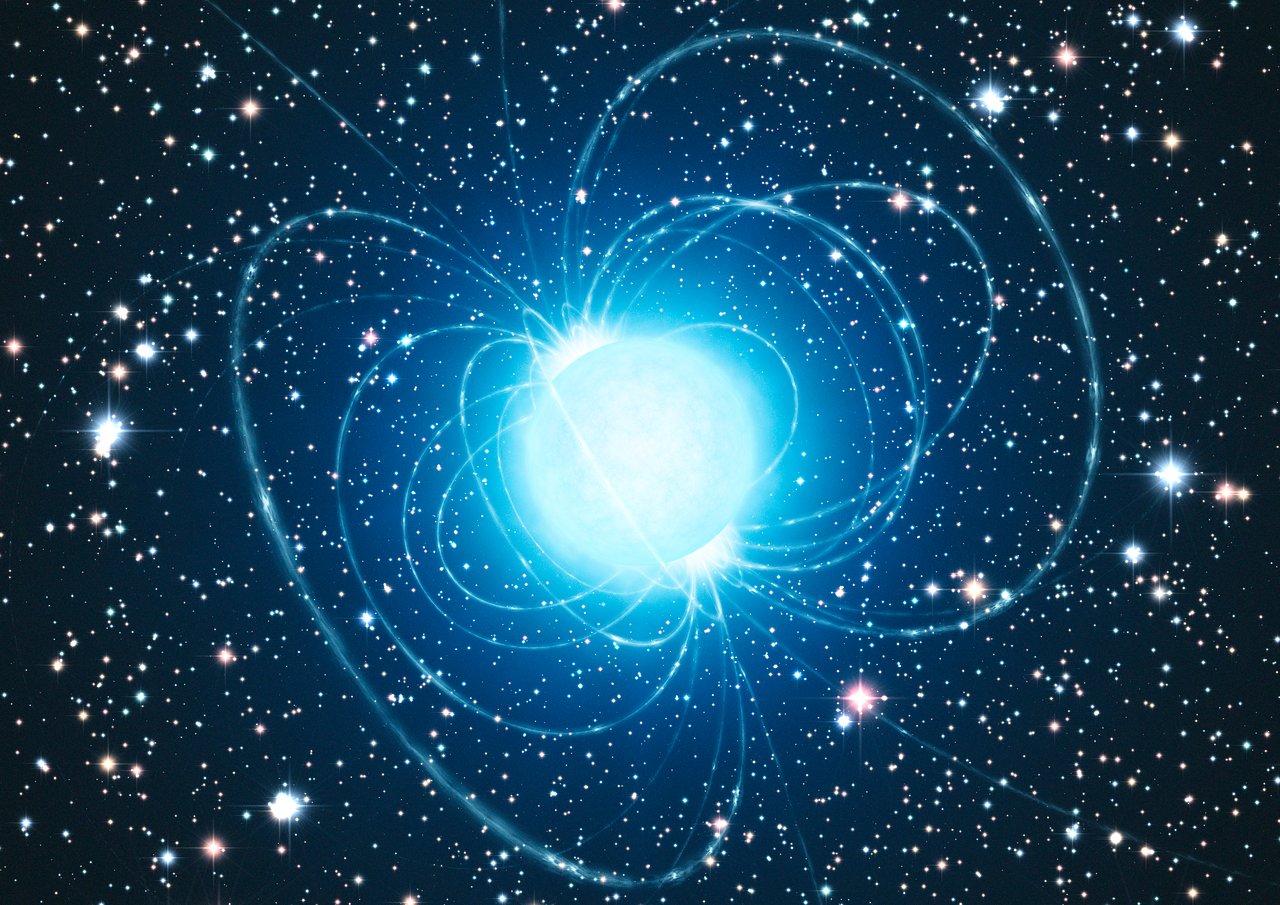European Southern Observatory | eso1034 | 18 Aug 2010
A VLT/FLAMES survey for massive binaries in Westerlund 1:Using ESO’s Very Large Telescope, European astronomers have for the first time demonstrated that a magnetar — an unusual type of neutron star — was formed from a star with at least 40 times as much mass as the Sun. The result presents great challenges to current theories of how stars evolve, as a star as massive as this was expected to become a black hole, not a magnetar. This now raises a fundamental question: just how massive does a star really have to be to become a black hole?
To reach their conclusions, the astronomers looked in detail at the extraordinary star cluster Westerlund 1[1], located 16 000 light-years away in the southern constellation of Ara (the Altar). From previous studies (eso0510), the astronomers knew that Westerlund 1 was the closest super star cluster known, containing hundreds of very massive stars, some shining with a brilliance of almost one million suns and some two thousand times the diameter of the Sun (as large as the orbit of Saturn).
...
Westerlund 1 is a fantastic stellar zoo, with a diverse and exotic population of stars. The stars in the cluster share one thing: they all have the same age, estimated at between 3.5 and 5 million years, as the cluster was formed in a single star-formation event.
A magnetar (eso0831) is a type of neutron star with an incredibly strong magnetic field — a million billion times stronger than that of the Earth, which is formed when certain stars undergo supernova explosions. The Westerlund 1 cluster hosts one of the few magnetars known in the Milky Way. Thanks to its home in the cluster, the astronomers were able to make the remarkable deduction that this magnetar must have formed from a star at least 40 times as massive as the Sun.
- The open cluster Westerlund 1 was discovered in 1961 from Australia by Swedish astronomer Bengt Westerlund, who later moved from there to become ESO Director in Chile (1970–74). This cluster is behind a huge interstellar cloud of gas and dust, which blocks most of its visible light. The dimming factor is more than 100 000, and this is why it has taken so long to uncover the true nature of this particular cluster.
- II. Dynamical constraints on magnetar progenitor masses from the eclipsing binary W13 - BW Ritchie et al
Astronomy and Astrophysics (accepted 14 Jun 2010) DOI: 10.1051/0004-6361/201014834
arXiv.org > astro-ph > arXiv:1008.2840 > 17 Aug 2010
- I. First observations of luminous evolved stars - BW Ritchie et al
Astronomy and Astrophysics 207(3) (Dec 2009) DOI: 10.1051/0004-6361/200912686
arXiv.org > astro-ph > arXiv:0909.3815 > 21 Sep 2009 (v1), 03 Oct 2009 (v2)
- Astrophysical Journal Letters 636(1) L41 (Jan 2006) DOI: 10.1086/499776
arXiv.org > astro-ph > arXiv:astro-ph/0509408 > 14 Sep 2005 (v1), 26 Jan 2006 (v3)

